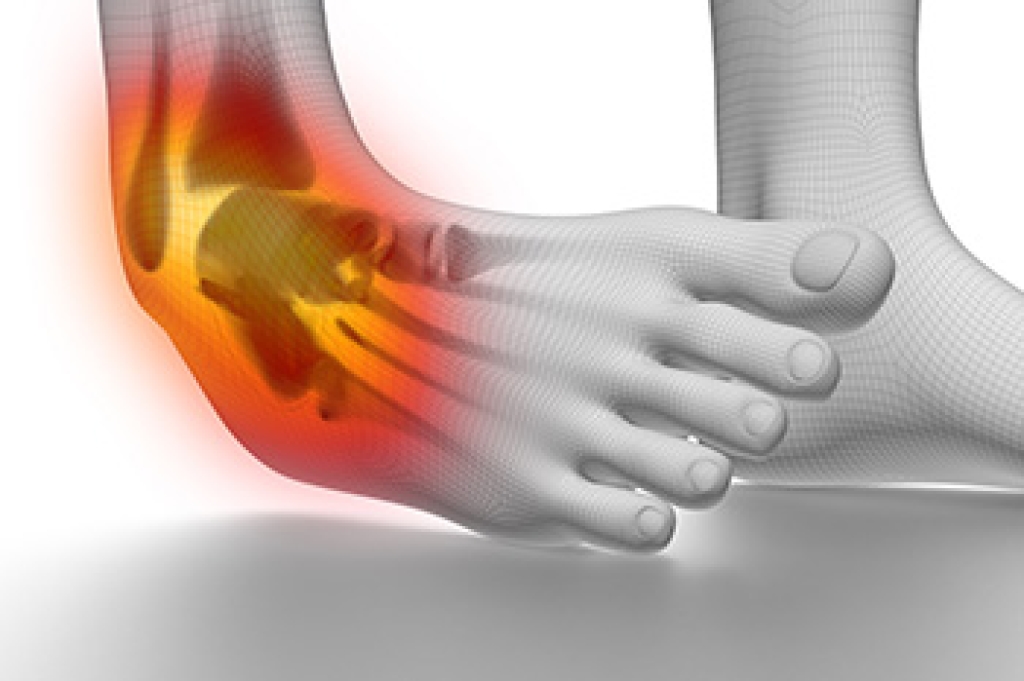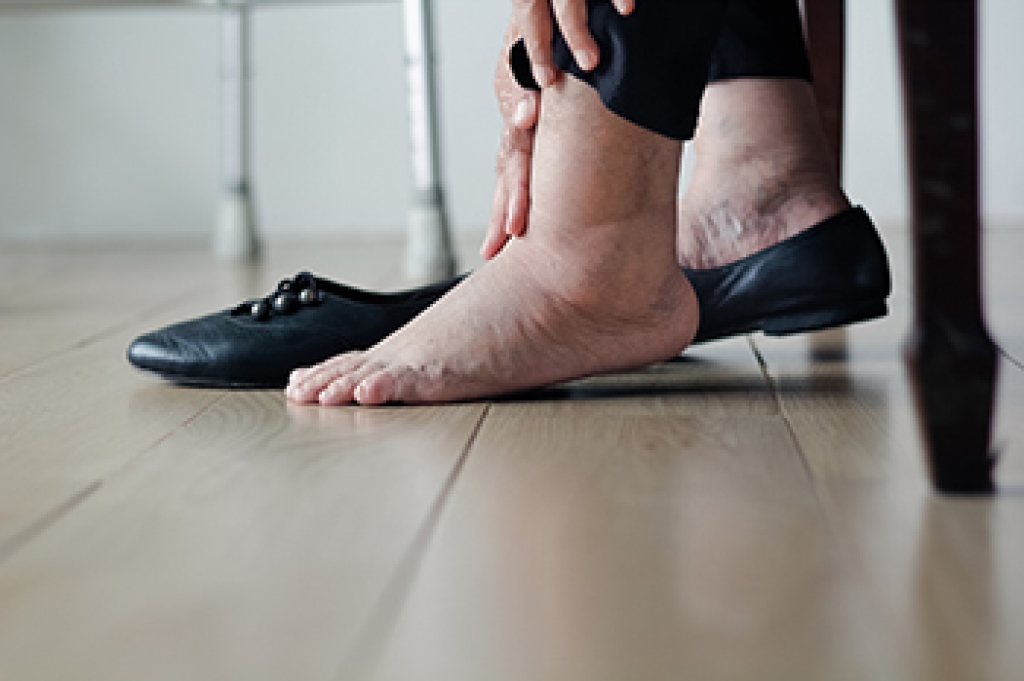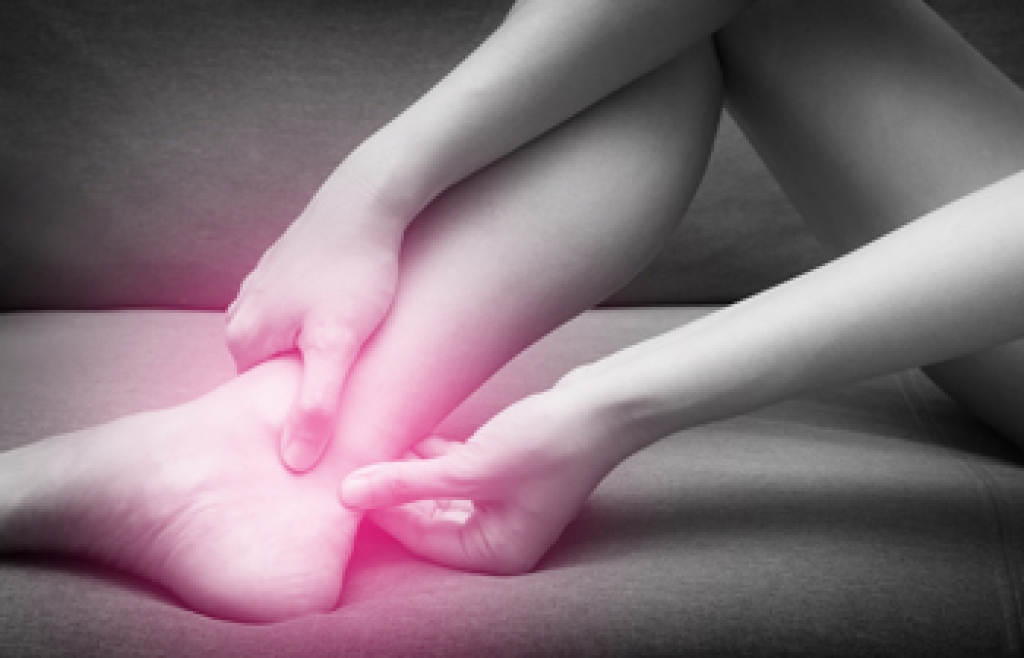Why Ankle Sprains Should Be Treated Professionally

When one or more of the ligaments that hold the ankle together gets overly stretched, an ankle sprain may occur. In severe ankle sprains, the ligaments may also tear either partially or fully. Depending on the level of injury, an ankle sprain may cause pain, swelling, stiffness, and difficulty walking. The most severe type of sprain may even make it impossible to walk. Ankle sprains that do not heal properly can lead to additional sprains and possibly chronic ankle instability. This condition can cause ankle pain and weakness, and a tendency for the ankle to turn out frequently. That is why it is important to seek professional care from a chiropodist. They can diagnose your ankle sprain and create a treatment regimen appropriate for the level of severity. If you believe you have sprained your ankle, or your ankle feels weak and wobbly from a prior sprain, make an appointment with a chiropodist.
When one or more ligaments in the ankle overstretch or tear due to injury, an ankle sprain occurs. If you would like to learn more about ankle sprains, please consult with one of the chiropodists from The Footcare Centre. Our chiropodists can help you maintain the health of your lower limbs and your mobility.
Symptoms of an ankle sprain vary depending on the severity of the injury, but may include:
- Pain
- Swelling
- Bruising
- Tenderness
- Difficulty walking
- Ankle instability
- A reduced range of motion in the ankle
Treatments for an ankle sprain may consist of:
- Resting the injured ankle
- Applying ice
- Elevating the ankle
- Compressing the ankle
- Over-the-counter pain medications
- Ankle braces or other devices to take weight off of the ankle
- Ankle exercises
- Surgery (in rare cases)
It’s important for the sprained ankle to heal correctly and fully in order to avoid repeated injury. If you have any questions, please feel free to contact our office located in . We offer the newest diagnostic and treatment technologies for all your foot care needs.
Dealing With Swollen Feet

Swelling of the feet and ankles is caused by a buildup of fluid that makes the area look puffy. It generally is an indication of an unrelated malady and is usually not a problem in and of itself. Swelling may be a sign of poor circulation or a reaction to trauma. You can tell if swelling is present by pressing on the area. If it leaves an indentation on the skin, which may be shiny and tight, the area is swollen. It also can be recognized if an indentation appears on the skin when you take off your socks. Common reasons for swelling include injury, infection, inflammation, or an insect bite. In addition, some autoimmune diseases, circulatory problems, and medications may cause swelling. Sometimes, resting, icing, and elevating the foot or ankle is enough to reduce the swelling. If swelling continues, even after taking these measures, it is a good idea to visit a chiropodist for a detailed examination to identify the underlying cause. Treatment options will be determined by the source of the swelling.
Caring for your feet is not just something done at the chiropodist’s office. Good foot care starts at home. If you would like to learn more about daily foot care practices, please consult with one of the chiropodists from The Footcare Centre. Our chiropodists can help you maintain the health of your lower limbs and your mobility.
There are many things that you can do at home to help care for your feet, including:
- Wearing shoes and socks that fit properly
- Washing the feet daily with soap and water
- Drying the feet thoroughly
- Applying moisturizer to the soles and heels of the feet
- Taking a walk and exercising the feet regularly
- Doing foot stretches and strengthening exercises
A chiropodist can help figure out a manageable foot care routine for you to keep your feet healthy. If you have any questions, please feel free to contact our office located in . We offer the newest diagnostic and treatment technologies for all your foot care needs.
What Is Tendonitis?

Tendonitis is when there is damage to a tendon that connects muscles to bones. It can be difficult to diagnose because it has some of the same symptoms as other ailments. When you have a problem with your Achilles tendon there will likely be pain, stiffness, swelling to nearby joints, and weakness in the surrounding muscles. You may also experience a grinding sensation when a hand is placed on the tendon because the damaged, injured cells are brought to the surface, a possible popping or snapping sound when the tendon is stretched across the bone and redness or discoloration at the site. If you are suffering several of these symptoms at the same time it is likely you have an injury to your Achilles tendon. If these progress to fever, infection is probably present and an appointment with a chiropodist is in order. A chiropodist can properly diagnose tendon or other foot and ankle issues as well as provide appropriate treatment options.
Achilles tendonitis is a common injury of the Achilles tendon, a band of fibrous tissue that runs along the back of the lower leg. The Achilles tendon can also rupture, making it impossible to lift the foot. If you are suffering from heel or calf pain, please consult with one of the chiropodists from The Footcare Centre. Our chiropodists can help you maintain the health of your lower limbs and your mobility.
Causes of Achilles tendon injuries include:
- Repetitive stress or overuse
- Sudden increase in activity levels
- High impact injury
- Calf muscle tightness or weakness
- Altered foot biomechanics
- Heel bone spurs
- Underlying medical conditions that weaken the tendon
Symptoms of an Achilles tendon injury include:
- Heel and calf pain that worsens following exercise
- Chronic heel and calf pain
- Sudden pain in the back of the ankle or calf
- A popping or snapping sensation
- Thickened lump in the Achilles tendon
- Ankle and calf stiffness
- Decreased range of motion in the affected foot
- Swelling
- Difficulty walking
Treatment
- Resting the affected leg
- Applying ice
- Compressing the foot and ankle
- Elevating the injured leg
- Wearing orthotics
- Low impact exercises
- Stretches
- Strengthening exercises
- Non-steroidal anti-inflammatory medications
- Cortisone injections
- Surgery, if the tendon is ruptured
Achilles tendon injuries can be very painful and lead to reduced mobility if left untreated. If you have any questions, please feel free to contact our office located in . We offer the newest diagnostic and treatment technologies for all your foot care needs.


